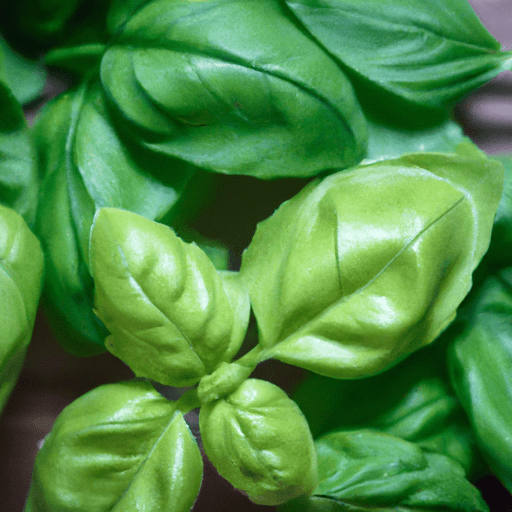Fresh Basil Leaf: A Culinary Delight
Welcome to another delightful journey into the world of culinary wonders! Today, we are going to explore the fragrant and vibrant fresh basil leaf. With its distinctive taste and numerous applications in the culinary world, basil is truly a herb that reigns supreme.
Taste and Aroma
The first thing that captures the senses when encountering fresh basil leaf is its remarkable aroma. The sweet, peppery scent instantly transports you to the sun-kissed fields of the Mediterranean. As for its taste, basil offers a unique blend of sweetness and slight bitterness, complemented by notes of pepper and cloves. This combination makes fresh basil leaf an indispensable ingredient in various recipes.
Versatile and Ubiquitous
Fresh basil leaf is widely used in cuisines all around the globe. From Italian to Thai and everything in between, this herb adds depth and complexity to countless dishes. It is a key component in classic Italian dishes like Caprese salad, pesto sauce, and Margherita pizza. In Thai cuisine, basil brings a distinctive aroma and flavor to dishes such as Pad Krapow Gai (Thai Basil Chicken) and Phat Kaphrao (Stir-Fried Basil).
Nutritional Value
In addition to its culinary prowess, fresh basil leaf also offers several nutritional benefits. It is a rich source of vitamins A, K, and C, as well as minerals like calcium and iron. Basil is also known for its potent antioxidants, which have been linked to potential health benefits, including reducing inflammation and supporting heart health. So, incorporating fresh basil leaf into your dishes not only enhances the taste but also adds a nutritious boost to your meal.
Fun Facts and History
Let’s delve into some intriguing facts about fresh basil leaf! Did you know that basil comes from the Greek word “basileus,” which means “king” or “royal”? It is often referred to as the “king of herbs” due to its prominent role in Mediterranean cuisine. Basil has been cherished for centuries and holds symbolic and religious significance in various cultures. It is believed to have originated in India and then traveled along the ancient spice routes to Europe and the rest of the world.
Conclusion
Fresh basil leaf brings an irresistible combination of aroma, taste, and cultural heritage to the culinary table. Its versatility in various cuisines, nutritional value, and captivating history make it a cherished herb among food enthusiasts worldwide. So, the next time you spot a bunch of vibrant green basil leaves at the market, be sure to grab them and embark on a flavorful adventure. Your taste buds will thank you!
Now that you have discovered the wonders of fresh basil leaf, it’s time to experiment, create, and savor the delightful flavors it brings. Happy cooking!
Fresh Basil Leaf
Origin: Basil is native to tropical regions from central Africa to Southeast Asia. It has been cultivated for over 5,000 years and is believed to have originated in India. Today, it is widely grown throughout the world.
Common Uses: Fresh basil leaf is commonly used as a culinary herb in a variety of cuisines, including Italian, Thai, and Mediterranean. It has a distinct and aromatic flavor, described as sweet, slightly peppery, and reminiscent of clove and anise. Basil is often used to enhance the flavor of tomato-based dishes, as well as in salads, soups, sauces, and pesto.
Nutritional Benefits: Basil is a good source of vitamins and minerals, including vitamin K, vitamin A, vitamin C, manganese, and iron. It also contains antioxidants, such as beta-carotene and lutein, which have been associated with various health benefits.
Unique Properties: Basil leaves contain essential oils that give them their distinctive aroma and flavor. These oils, including eugenol, linalool, and citronellol, also have antibacterial and antifungal properties. Basil is known for its cooling and calming effects and is sometimes used in traditional medicine for its potential digestive and anti-inflammatory properties.
Historical Significance: Basil has a rich history and has been revered in various cultures throughout time. In ancient Egypt, basil was used in religious ceremonies and was believed to have protective properties. In Greek and Roman cultures, it was associated with love and fertility. In India, basil is considered sacred and is often found in Hindu temples. It has also been used in traditional medicine systems like Ayurveda and traditional Chinese medicine for its potential health benefits.
Please note that while basil is generally safe for consumption, some individuals may be allergic to it. It’s always important to consult with a healthcare professional or allergist if you suspect any food allergies or sensitivities.




Use the share button below if you liked it.
It makes me smile, when I see it.